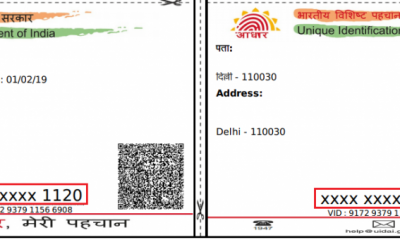Trading
How to Use Currency Pair Correlations Strategy in Trading

If you’re a fast trading aficionado, you might be on the hunt for fresh strategies to skyrocket your gains and slash your losses. You might have heard of or already used some strategies, such as technical analysis, fundamental analysis, or trend following. But have you ever heard of currency pair correlations?
Currency pair correlations are like the secret sauce of the financial world, revealing the intricate dance moves of different currencies as they tango with each other. By mastering their usage, you can unleash a formidable strategy that will turbocharge your trading prowess and sprinkle a dash of diversity into your investment portfolio.
This article will show what currency pair correlations are, how they work, and how to use them to your advantage. We will also show you how to trade pairs with positive and negative correlations and how to avoid some common mistakes. After reading this piece, you’ll have a new trading tool to help you reach your goals.
What are Currency Pair Correlations?
To understand currency pair correlations, let’s use a simple analogy.
Imagine that you have two friends, Alice and Bob, who always go to the same parties. Whenever Alice shows up, Bob is likely to show up too. And Bob will likely stay home whenever Alice doesn’t show up. In other words, Alice and Bob have a positive correlation: they tend to move in the same direction.
Now imagine you have another friend, Charlie, who has a different taste in parties. Whenever Alice shows up, Charlie is likely to stay home. And whenever Alice doesn’t show up, Charlie is expected to show up. In other words, Alice and Charlie have a negative correlation: they tend to move in opposite directions.
The same logic applies to currency pairs. Some currency pairs move in the same direction, while others move in opposite directions. This is because economic conditions, interest rates, political events, and market sentiment can all have a similar or opposite effect on both.
For example, the EUR/USD and the GBP/USD tend to have a positive correlation; they usually move in the same direction. This is because the monetary policy of the European Central Bank, the Brexit negotiations, and the COVID-19 situation in Europe all have an impact on both the euro and the pound.
On the other hand, the USD/CHF and the EUR/USD tend to have a negative correlation; they usually move in opposite directions. This is because the Swiss franc is considered a safe-haven currency that attracts investors during times of uncertainty or risk aversion, while the euro is seen as a riskier currency that benefits from optimism or risk appetite.
How to Trade Positive and Negative Correlation Pairs
Knowing how currency pairs correlate can help you improve your trading strategy in several ways. Here are some of them:
- You can diversify your portfolio by choosing pairs with low or no correlation, reducing your exposure to market fluctuations, and avoiding putting all your eggs in one basket.
- Selecting pairs with a negative correlation allows you to reduce risk. As a result, you can hedge your bets against price declines and mitigate potential losses.
- You can double your profits by choosing pairs that have a positive correlation. This way, you can amplify your gains by taking advantage of similar price movements.
However, before you start trading correlation pairs, you need to be aware of some essential points:
- Correlation is not constant; it can change over time due to various factors. Therefore, you must regularly monitor the correlation coefficients and adjust your strategy accordingly.
- Correlation is not causation; it does not imply that one currency causes another to move. Therefore, you need to analyze the underlying factors that affect each currency and not rely solely on correlation.
- Correlation is imperfect; it does not mean that two currencies will always move exactly in sync or oppositely. Therefore, you must use other indicators and tools to confirm signals and manage risk.
How to Minimize Losses and Maximize Profits
While using correlations between currency pairs can significantly improve your trading results, doing so is not without its challenges and limitations. Here are some tips on how to overcome them:
Use stop-loss orders
When the price reaches your predetermined target against losses, these orders will trigger and close your position immediately. You can use them to hedge your trades against large price swings and protect your investment capital.
Use take-profit orders
These orders automatically close your position when the price reaches a certain level. They can help you lock in your profits and avoid missing out on favorable price movements.
Use trailing stop-loss orders
These are orders that automatically adjust your stop-loss level according to the price movement. You can reduce your risk while increasing your profits by using them to stay on trend.
Use multiple time frames
These are different charts that show the price movement over different periods. You can use them to spot long-term patterns, intermediate shifts, and short-term opportunities.
Conclusion
Currency pair correlations are a powerful strategy that can help you improve your trading performance and diversify your portfolio. By knowing how to use them, you can trade positive and negative correlation pairs, hedge your positions, double your profits, and minimize your losses.
However, currency pair correlations are not infallible and can change over time. Therefore, you should use them cautiously and with other strategies and tools, such as technical and fundamental analysis.
The best way to master currency pair correlations is to practice them in a demo account, where you can test your skills and learn from your mistakes without risking real money. You will improve as a trader by gaining the self-assurance that comes with experience.
Trading
How Traders Can Get Big Returns From Day Trading
In the trading business, there is an old proverb that goes something like this: “You need to risk more to make more.” That is not at all the case. Rather, traders should strive to incur fewer risks with each transaction in order to improve their earnings over time.
The majority of people trade risk in the wrong manner. Long-term returns are more likely to be high when just a small fraction of the account balance is at risk with each transaction, such as 1% of the account value.
To put it another way, no matter how skilled a trader grows, he or she will experience losses. When you take on more risk in each transaction, your “risk of ruin” rises, meaning you might lose all of your funds.
If you only invest 1% of your entire account value in each transaction, you are unlikely to lose all of your money. However, how you employ that one percent is essential. Taking a 1% risk on a $10,000 portfolio does not imply naively acquiring $100 in shares (or other assets). Alternatively, you may make the most of your money by setting a 1% stop-loss and profit target.
Risk/Reward Ratio
Determine how much money you’re willing to put at risk before determining how to invest it. Before you begin, you must choose your entry point, stop-loss level, and profit target. XYZ stock is now trading at $17.15. Your $10,000 short selling account is now worth $17.11. If you put 1% of your money at risk, you might lose $100. You decide to set a stop-loss of $17.22 for your day trade based on the stock chart. The risk per share is calculated by dividing $0.11 ($0.11) by 100, yielding 909. You may short sell up to that amount of shares (position size).
A price chart may also assist you in determining a suitable profit objective. Based on your initial position, you may earn $0.41. In other words, the risk/reward ratio is 0.27, which is $0.11. It’s just a fifth of what you might have made. Using a stop-loss assures that you won’t lose more than 1% of your account balance, but winning your trade will earn you close to 4% of your account balance profit (because you risked 1 percent, and your potential profit is close to four times your risk). Furthermore, those investors who wish to make a large return on a little amount of money frequently pick accounts with a low minimum deposit, such as Cent and Micro accounts. As we can see from the FBS broker review, there are various brokers that enable investors to utilize the aforementioned accounts to earn money with a modest amount of money. FBS is an example of one of these brokers. Investors may learn more about how brokerages enable them to generate service fees, trading platforms, and so on via reviews.
A 4% increase in account equity for a single transaction is a significant chunk of money. If we make a few excellent purchases each year, we’ll earn more money than most investors in a year, but our risk is still modest and manageable.
Despite the near-zero risk of disaster, it is feasible to make significant gains.
However, the risk/reward ratio isn’t the only thing to think about. If the profit objective is exceptionally difficult to achieve, a very high risk/reward ratio is of limited use. This is where the bulk of traders go wrong. In their opinion, a risk-to-reward ratio of 0.1 is superior to a 0.75 one. However, this is not always the case. Your stop-loss and goal should be determined by the most recent price activity, not by your hopes and dreams for your trades.
Risk/reward ratios of less than 0.5 are ideal, but make sure that the profit objective remains achievable as the risk/reward ratio decreases. If you establish unrealistic profit objectives that never materialize, your chances of being stopped out (i.e. losing) on a trade increase.
Demo account practice may assist you in determining what win rate (chance of profit) and risk/reward ratios are ideal for your trading style.
How Does Day Trading Work?
Only a few years ago, the online market was available to workers of significant financial institutions, brokerages, or trading houses who could actively participate. The typical citizen may now engage in the stock market via online trading.
Day trading has the ability to generate a lot of money for you (as long as you do it properly). As a beginner, it’s critical to have a clear approach, but this might be difficult for those who don’t have one. Even the most seasoned day traders have had their fair share of setbacks throughout their careers. What exactly is day trading, and how does it operate?
“Short-term trading” is one of the most prevalent expressions used to describe “day trading” in financial markets. Any market may be impacted, but the currency and stock markets are the most prevalent. The vast majority of day traders are well-educated and financially secure. To capitalize on tiny price movements in highly liquid shares or currencies, large leverage and short-term trading strategies are used.
Short-term market swings may be forecasted by day traders. The utilization of current events as a basis for trading is rather common. It is critical to remember this in order to comprehend how scheduled releases such as economic data, business profitability, and interest rates are influenced by market expectations and market psychology. When expectations are not fulfilled or surpassed, the market reacts violently, which may be highly beneficial to day traders.
-

 Internet4 years ago
Internet4 years agoHow to Download a Copy of Your Aadhaar Card
-

 Apps4 years ago
Apps4 years agoHow to Book an Ola or Uber Using Google Maps
-
Sports2 years ago
10Cric India Bookmaker Review for Betting on Sports Online in 2022
-
Android Games4 years ago
LDPlayer vs Nox Player: Powerful Android Emulator for Gaming
-

 Apps4 years ago
Apps4 years agoHow to Install WhatsApp Beta for Windows Mobile or Windows Phone
-

 How to4 years ago
How to4 years agoJio Fiber Landline Service: How to Activate Jio Home Phone aka JioFixedVoice for Free Calling
-

 How to4 years ago
How to4 years agoWhatsApp Web: Everything You Need to Know
-

 How to4 years ago
How to4 years agoHow to Increase Followers on Instagram for Real




